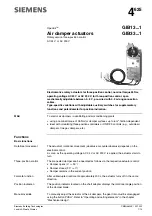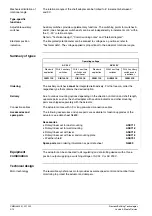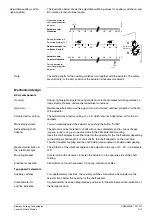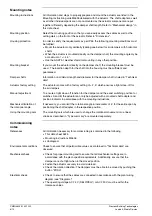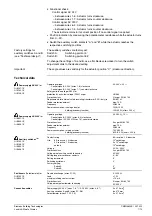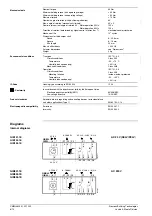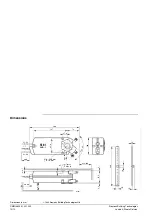
Siemens Building Technologies
CM2N4625E / 02.1999
Landis & Staefa Division
5/10
The basic system data for the control systems in use contains all engineering notes.
Read all the engineering notes before mounting, wiring, and commissioning the
actuator.
These actuators must be used in a system only for applications as described in the
basic system data documents for the applied control systems. Additionally, all actuator
specific features and rules must be observed as described in the brief description on the
title page of this data sheet (bold print) and in the chapters "Use", "Engineering notes",
and "Technical data".
All paragraphs marked with the special warning triangle as illustrated on the left contain
additional safety information and limitations that must be observed under any
circumstances to avoid physical injuries or damages to equipment.
These actuators must only be used with
safety extra-low voltage
(SELV) or
protection
by extra-low voltage
(PELV) in accordance with HD 384.
The actuators are double-insulated and do not provide a connection for the protective
ground.
Use
either line voltage or
safety extra-low voltage
for auxiliary switches A and B. Do
not mix the two for operation. However, operation using various phases is permissible.
Do not open
the actuator!
The actuator is maintenance-free. Maintenance work may only be conducted by the
manufacturer.
•
Electric
: Electric parallel connection for the same actuator types is permissible
provided the operating voltage is within the required tolerance. Voltage drops at the
feed lines must be included.
Electric parallel connection of these actuators is possible only via relay if used with
types GDB..3..1, GLB..3..1, SQE3…, SQE8…, SQR3… or SQR8….
•
Mechanical
: Do
not
mechanically couple the actuators.
The quantity of actuators required depends on several torque factors. After obtaining
the damper torque rating (Nm/m
2
) from the manufacturer and determining the damper
area, calculate the torque required to move the damper as follows:
Total Torque = Torque Rating × Damper Area
Number of actuators
=
Total Damper Torque required
SF x Actuator Torque (Refer to Specifications)
1
1
Safety Factor: When calculating the number of actuators required, a safety factor should be included for
unaccountable variables such as slight misalignments, aging of the damper, etc. A suggested safety factor
is 0.80 (or 80% of the rated torque).
If the calculated number of actuators is > 1, the damper construction must be adjusted
accordingly.
•
Use safety insulating transformers with double insulation in accordance with
EN 60 742; the transformers must be made for 100% runtime.
•
Observe all local safety rules and regulations pertaining to sizing and protecting
transformers.
•
Determine the transformer’s power consumption by adding the power consumption
in VA for all actuators used.
Refer to "Commissioning notes" and "Internal diagram" in this data sheet as well as to
the HVAC job drawings.
Engineering notes
STOP
Proper use
AC 24 V supply
AC 230 V supply
Auxiliary switches A,B
Warning,
maintenance
Parallel connection of
actuators
Required actuators
Calculating the required
actuators
Note
Sizing transformers
for AC 24 V
Wiring and
commissioning

